Reduce Printing Costs
There is no business out there that doesn’t want to reduce its printing costs. Whether it’s sending documents to clients, color printing for internal needs, or direct mail advertising, there are plenty of expenses related to printing.
Nowadays, there are many easy ways to reduce printing costs. Today’s printing environment allows for many innovations to help you eliminate high printing costs and enjoy significant savings. You are on the right page if you are looking for managed print services to save money. At TGI, we use eco-friendly printing methods, reduce paper and ink usage and commit to green practices to help you make the most of your printing and stationery costs.
Best Ways To Reduce Printing Costs
As we said, printing doesn’t need to be expensive. You can lower your printing costs and save money on your printed documents.
Let’s look at some of the best ways to reduce printing costs.

1. Reduce the use of color printing
Color ink cartridges are a standard for many businesses, but they cost a lot and make color printing expensive. It also takes more time to print something in color than black and white, and the power usage increases considerably. The reason for that is not only the toner and ink cartridges – color laser printers consume energy, in fact, a lot more than printing black on white which is what monochrome printers do.
The practice of black-and-white printing is also called monochrome printing, and it is best to focus on it and limit your color printing needs as much as possible. If you are not printing materials such as direct mail or other critical promotional materials, you can save ink by reducing printing in color and focusing on the monochrome alternative.
2. Encourage printing on both sides
Paper usage is another essential factor if you want to reduce costs. If you are used to single-sided printing, you can double your printing paper capacity and consider double-sided printing to save paper. As you know, single-sided print jobs cause a lot of paper waste, knowing that the other side of the sheet is entirely unused.
Also known as duplex printing, this practice can help you reduce printing paper usage. It allows you to automatically print on both sides of a sheet without manually removing each paper sheet, changing its side, and loading it back.
With duplex printing, you can double your paper sheets capacity and make the most of your paper use. For instance, you can use duplex printing if you need to print some files or records that you rarely use or don’t need. All you need to do moving forward is set the two-sided printing option in the printer settings, and you will maximize your paper sheets.
3. Reduce your margins
What is your printing margin preference? In most cases, it is set at 1.25″ by standard (as per all Microsoft Word documents). The more you increase, the less content will fit on your page. More significant margins are the go-to option for design purposes, while some prefer lesser margins. The good thing is that you can control printing costs by avoiding broader margins and customizing these to your personal choice.
For instance, you can reduce page margins to 0.75″ and free up more space to fit in more content. If you print the text content from web pages or don’t need a specific margin set, doing this can help you reduce paper usage by up to 5%. All that white spacing between each row will now be used, and you will print as few pages as possible.
4. Use eco-friendly fonts
Arial is the standard option whenever you can quickly print multiple pages per sheet and finish the job. While it seems ideal, Arial is not the most eco-friendly font, as it uses much more ink than other fonts.
Next time you do multi-page printing, choose Century Gothic, Times New Roman, or Ecofont – all these alternatives are economical and eco-friendly. According to statistics, printing pages with Century Gothic can help you reduce printing costs by up to 30%. Of course, we are talking about ink usage compared to Arial. To reduce costs from your printers, switch to smaller font sizes suitable for your docs.

5. Preview before printing
Print cost reduction is all about being careful and thinking twice about your choices before hitting the ‘Print’ button. Just like that, you also need to proofread your entire document before printing it. It might take a few minutes or a few hours, but you will know that none of the paper is going to go to waste.
Print preview will help you be more efficient when printing documents. It can also help you correct typographical errors or layout issues, which may require you to do expensive reprints and further strain your office printing budget.
Our advice when running the print preview option is to look for page breaks, extra spaces, short gaps, or typos in the document and correct them before printing.
6. Only print the documents you need
One great principle in reducing printing costs is printing only the needed pages. For instance, if you print out content from web pages, remove all necessary headers, images, banners, and other things while in the print dialogue box menu. Assuming you need the text only, make sure to copy the text, and you can save money on printing.
Another option is to specify the pages you want to print when the print dialogue box appears or copy and paste the required things into a word document before publishing it and configuring the print dialogue box.
Select only the required things from the print dialogue box, copy and paste them into a Word file, or use software to select only what is needed for printing automatically.
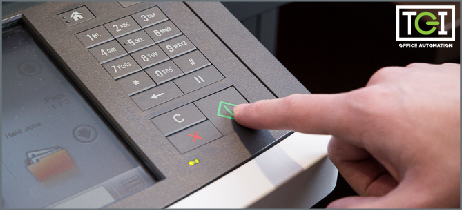
7. Hit the print button with caution
Another in the list of cost-effective printing hacks is relatively simple. It revolves around the ‘Print’ button being more patient with it. Often, your printer becomes a little slow or will print late due to specific reasons such as overlapping tasks, lack of loaded paper, or toner requirements. Either way, be patient when printing draft copies, and don’t hit the ‘Print’ button repeatedly (being angry at your printing device).
If nothing happens after you hit the button once, you might want to slow down and look for any printer notifications before hitting the button repeatedly. A notification can tell you whether the print job is scheduled or if there is a potential problem with it.
8. Print in draft quality
Do you still need to print out your documents before your final edits? The answer is simple – print in draft copies. This “draft copy” feature uses less ink and gives you rough copies that allow you to check spelling, grammar, and other stuff compared to a hard copy.
If your printing environment supports this, you can also play around with draft mode in your printer settings. With this feature, your documents will be low-quality, saving you a lot of ink or toner compared to the high-quality printing alternative.

9. Purchase compatible ink cartridges
Another good way to control printing costs is by reducing the cost of your ink. Original ink cartridges are the best and most recommended choice when printing in high quality. Whether you use a multifunction printer or a basic model, stick to these cartridges, and you won’t see any ink leakage.
If you want to look into print cost reduction, you can also consider using compatible ink cartridges. These are cheaper and offer good quality – they are especially great if you don’t print out high-quality images. There are even recycled ink cartridges that are often cheaper than compatible ones.
10. Personal Printers? What Type?
If you need a new member in your personal printer collection and want a cost-effective model, you should know that there are plenty of models that are known as cost-effective.
For instance, you can eliminate personal printers and replace them with large multifunction printers (MFPs) that have more features and are easy to maintain (even though the upfront costs might be higher).
Many can even provide more features than standard printing – we refer to models packed with scanning, email, fax, copy, WiFi, and more features. For instance, if you only need a printer for documents, you don’t need a quality color printer or any fancy inkjet printer. Any multifunction printers would do in this case, assuming you don’t want to outsource to managed print services and providers.
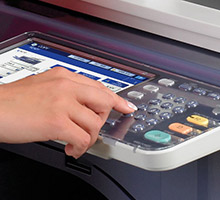
11. Don’t let your printer sit idle
If you are not printing regularly, chances are that your printer is turned on but is idle. Doing that only harms your machine – leaving it idle for a long time may clog up the nozzles in standard inkjet printers due to dried-up ink.
Printers use more ink when they get ready for printing, especially after they are turned off for a long time. So, if you print regularly, consider putting your printer on sleep or standby mode to save some ink.
Print at least a page every week if you don’t want potential repairs down the line. The Google homepage is a good example – it has all the colors but doesn’t require much ink.
12. Use standard-sized paper
The paper printing machine cost is high nowadays. However, purchasing the paper that goes into these machines also makes a crucial difference in your budget. For instance, a standard-sized letter is cheaper to print than an oddly shaped one.
If you are working with documents in all sizes on your multi-function printers and you typically print large sheets of paper and trim them, your cost is already high. Consider changing your paper type and opt-out to standard-sized paper sheets if you can.
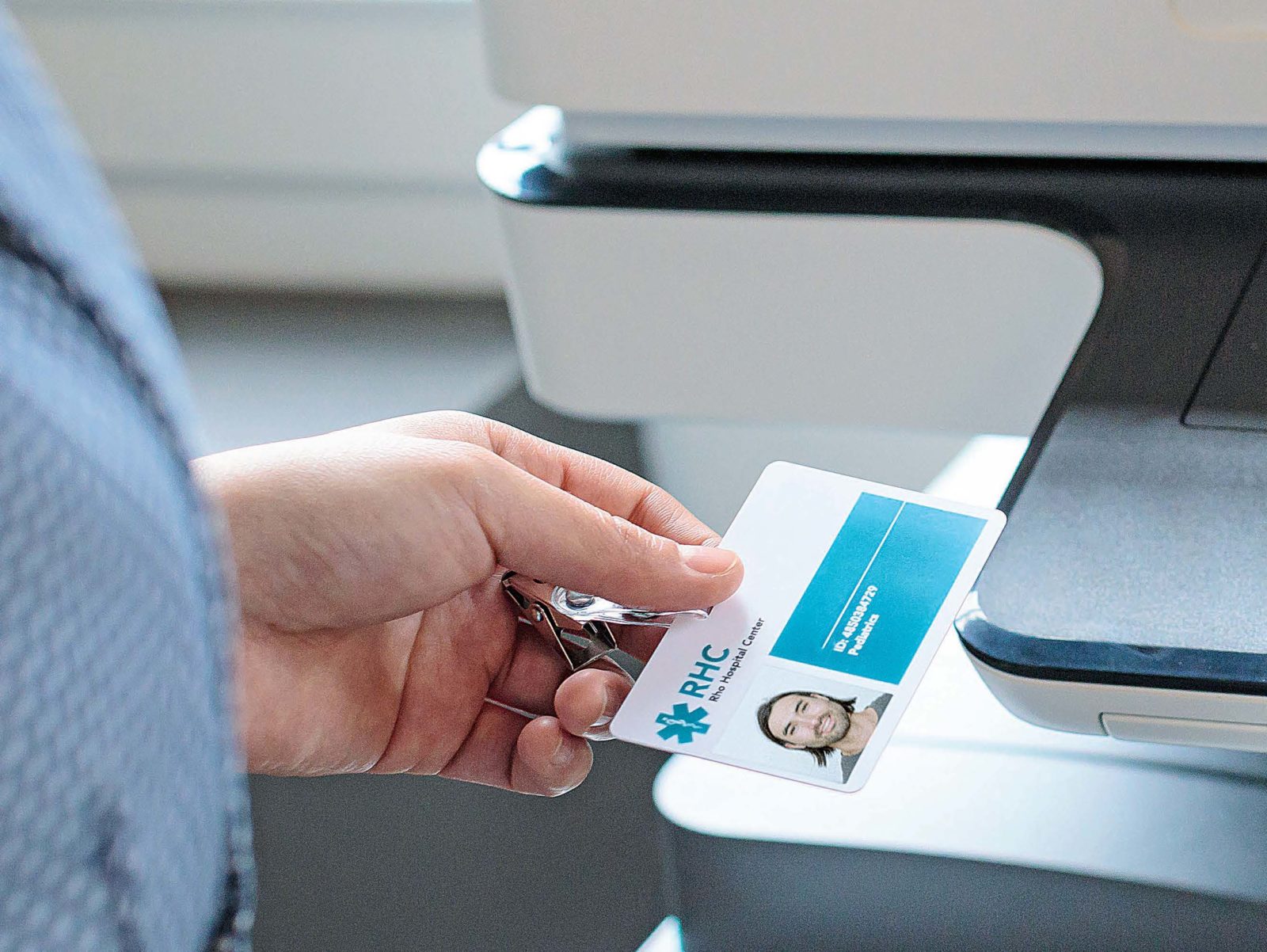
13. Select paper carefully
Paper use has a lot to do with how cost-effective you are with your printing. If you want to reduce your cost, select your paper carefully. Today’s prices of paper sheets mainly depend on their whiteness, weight, and coating. However, you can always use recycled paper instead of those sturdy sheets that weigh more.
If the type of paper and its quality are not crucial, know that you can opt-out of alternatives to reduce costs. Plenty of companies with limited budgets are desperate to understand how to control their printing costs, and this solution helps.
14. Reduce your print density
Your printing device has something called print density. The lower this is, the lesser ink will be required, which is another excellent way to have your employees print documents but save you money. The option to reduce print density will print your copies in a lighter way than usual, but you won’t see a lot of difference.
You can use this strategy on all your printers, and your overall printing cost will decrease. You will quickly see a substantial reduction in ink usage, saving you money in the long run. Again, lower print density is just fine if you are printing standard documents.
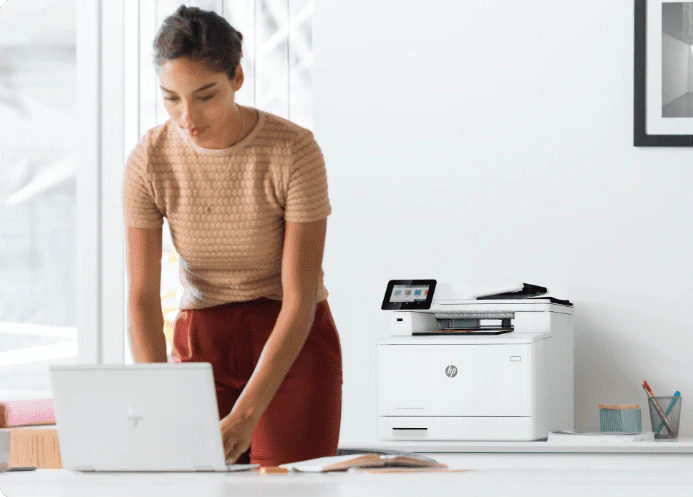
15. Consider using Managed Print Services (MPS)
The Managed Print Services (MPS) solution allows you to consolidate your printing environment and use a single server for all your printers. You can track only what you need and everything across all devices. In addition, you can see which of your printers are idle, which are used the most, and so on.
The point of using MPS is to spread out your printing activities, carefully manage your expenses, and optimize and monitor everything. MPS facilitates cost-effective printing solutions all the time.
16. Revisit printers and suppliers
You don’t have to do all of your printing in-house. Nowadays, there are printing services at every corner, so it may be wise to contact your local print experts and get price quotes from various competitors before selecting one. The same applies to printer models – if you are in the market for a new printer, see which of the tips mentioned above apply to it and how you can save money in the long run.
As a last note, know that not all print shops specialize in all sorts of printing. For instance, a great shop for printing color projects on big sheets of paper may not be the cost-effective option you need for your standard documents. The same goes for printer models, so you should research and shop before selecting one.
